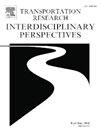城市街道是否适合开展无车日活动的标准
IF 3.9
Q2 TRANSPORTATION
Transportation Research Interdisciplinary Perspectives
Pub Date : 2024-10-24
DOI:10.1016/j.trip.2024.101197
引用次数: 0
摘要
城市人口不断增长,复杂性不断增加,面临着与道路安全和机动性有关的城市危机。为应对这些挑战,政府和合作利益相关者正在引入无车日计划。在这项研究中,通过三轮德尔菲研究,建立了一个科学标准,以确定适合开展此类计划的街道。来自学术界、城市政府、国际和地方组织以及自由职业顾问的二十位专家参与了这项研究。小组成员通过开放式和封闭式讨论、案头研究以及无车日研讨会的见解,确定了分为六个类别的 46 项标准。小组成员就所有类别和 40 个项目达成了共识。结果显示,专家组成员在环境、健康与安全、土地使用与路边以及流动性与可达性这三个类别上达成了 "良好一致";在类别、几何与功能以及政策与治理这三个类别上达成了 "中等一致";而在社会与经济这一个对象上达成了 "弱 "一致。相对重要性指数表明,"流动性和可达性 "以及 "环境、健康和安全 "这两个类别被认为是最重要的。研究表明,这些结果有可能对城市规划和交通政策产生影响。本文章由计算机程序翻译,如有差异,请以英文原文为准。
Criteria for urban streets suitability for car-free day initiatives
Cities with a growing population and complexity face urban crises related to road safety and mobility. Governments and collaborative stakeholders are introducing car-free day programs to address these challenges. In this study, a scientific criterion to identify suitable streets for such programs was established through a three-round Delphi study. The study involved twenty panelists from academia, city governments, international and local organizations, and freelance consultants. The panelists identified forty-six criteria clustered into six categories through open-ended and close-ended rounds, desk research, and insights from a car-free day workshop. The panelists reached a consensus on all categories and forty items. According to the results, the panelists reached a “good agreement” on three categories, environment, health & safety, land use & roadside, and mobility & accessibility; a “moderate agreement” on the three categories, namely, categories, geometry & functionality, and policy & governance; and a “weak” agreement on the one object, namely, social & economic. The relative importance index indicated that the two categories, “mobility and accessibility” and “environment, health and safety”, were considered the most important. The study suggests that these findings can potentially influence urban planning and transportation policies.
求助全文
通过发布文献求助,成功后即可免费获取论文全文。
去求助
来源期刊

Transportation Research Interdisciplinary Perspectives
Engineering-Automotive Engineering
CiteScore
12.90
自引率
0.00%
发文量
185
审稿时长
22 weeks
 求助内容:
求助内容: 应助结果提醒方式:
应助结果提醒方式:


